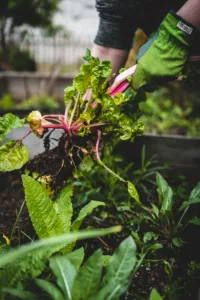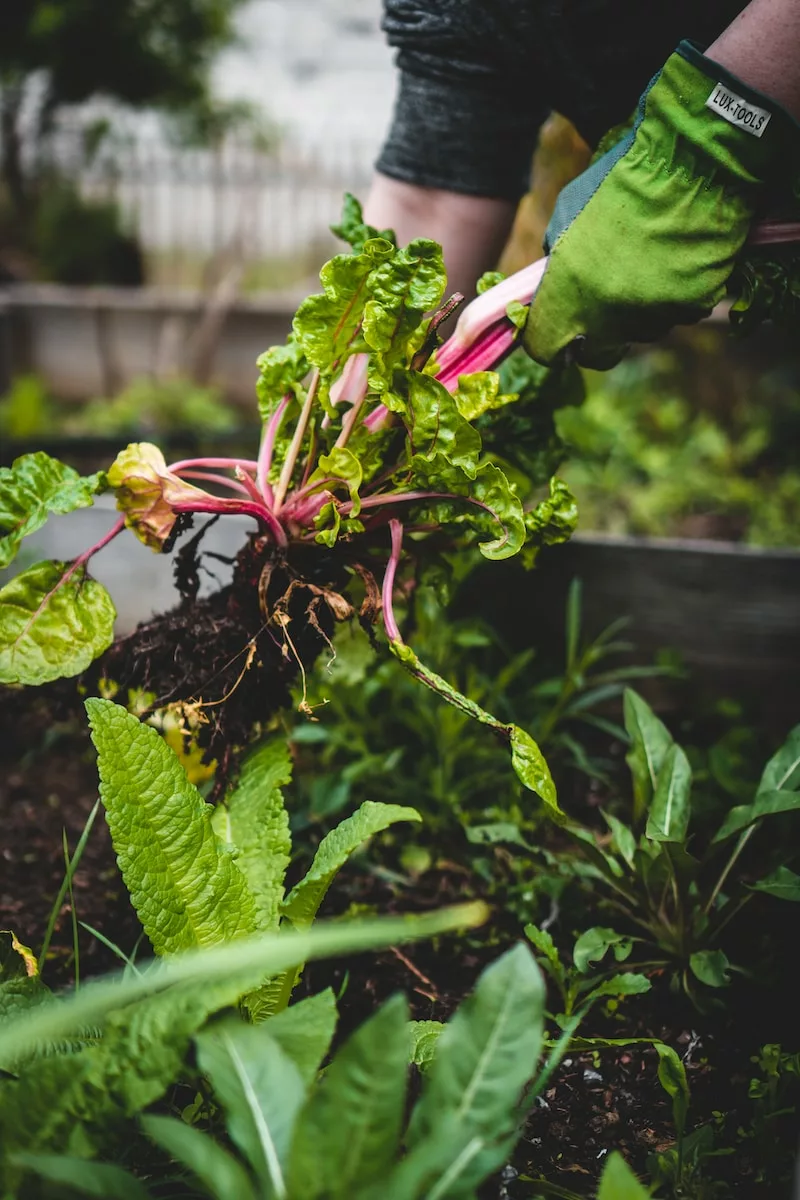In the context of “Non-Cruciferous Vegetables: Nutrient-Dense Alternatives to Broccoli and Cauliflower,” the text would be rephrased as follows:
If the mention of brussel sprouts, cauliflower, or broccoli makes your mouth water or leaves you feeling disgusted, this video is not about forcing you to eat more broccoli. It’s important to note that some people may not be able to handle large amounts of these fiber-rich vegetables due to digestive issues. That’s why Dr. Gundry offers nutrient-dense alternatives to cruciferous vegetables in this video. So if you’re searching for a healthy substitute for cauliflower or want to add some variety to your grocery list’s “vegetable” section, this video is for you!
Get all the essential information for a long and healthy life directly in your inbox! Sign up for Dr. Gundry’s newsletter by clicking here: https://drgundry.com Too much broccoli – is it possible? In this video by The Dr. Gundry Podcast, Dr. Gundry explores nutrient-dense alternatives to cruciferous vegetables like broccoli and cauliflower. While some people love these fiber-packed veggies, others may have digestive issues or simply want to switch up their vegetable options. Dr. Gundry shares his favorite non-cruciferous vegetables and offers cooking tips and ideas to incorporate them into your diet. Whether you’re looking for a cauliflower substitute or want to expand your vegetable repertoire, this video provides a range of delicious and healthy alternatives.
If you’ve been following Dr. Gundry’s channel, you know his love for cruciferous vegetables. However, he acknowledges that they may not be suitable for everyone. In this video, he addresses the concerns of those who want to follow The Plant Paradox way but don’t want to overdo it on cruciferous veggies. Dr. Gundry shares his go-to non-cruciferous vegetable options, offering cooking suggestions and exploring their nutritional benefits. From versatile options like asparagus and dandelion greens to flavor-boosters like celery, onions, and garlic, this video provides a variety of alternatives to satisfy your taste buds and support your health.
Why are people avoiding cruciferous vegetables?
Bad cooking experiences
Many people avoid cruciferous vegetables because they have had bad cooking experiences in the past. If not cooked properly, these vegetables can become tough, stringy, or mushy, which can be unappetizing. However, it is important to note that with the right cooking techniques, cruciferous vegetables can be delicious and enjoyable to eat.
Health concerns
Another reason why people may avoid cruciferous vegetables is due to health concerns. Some individuals may have specific dietary restrictions or health conditions that require them to limit their intake of cruciferous vegetables. One example is individuals with thyroid issues, as certain compounds found in cruciferous vegetables called goitrogens can interfere with thyroid function.
Nutrient-Dense Alternatives to Cruciferous Vegetables
Asparagus
Asparagus is a versatile and nutrient-rich vegetable that can be used as an alternative to cruciferous vegetables. It can be quick-cooked over high heat, roasted, used in stir-fries, shaved raw as noodles, or even made into soup. Despite its bad reputation among those who have only had canned asparagus, fresh asparagus, when cooked properly, has a sweet nutty flavor and doesn’t become tough or stringy. It is high in vitamins A, C, and K, as well as folate and fiber.
Dandelion greens
Dandelion greens are another great alternative to cruciferous vegetables. They are quick-cooking, versatile, and perfect for busy weeknight meals. Dandelion greens can be sautéed in just a couple of minutes, used in soups and braises, or even roasted to make chips similar to kale chips. They are high in vitamins A, C, and K, as well as calcium and iron.
Celery
Celery is often overlooked as a vegetable, but it is a fantastic alternative to cruciferous vegetables. It can be enjoyed raw in salads, either diced or shaved thin, or cooked by roasting or sautéing. Celery adds a great texture and flavor to various dishes and is particularly delicious when paired with onions and garlic. It is a good source of vitamins A, C, and K, as well as fiber.
Onion, Leeks, and Garlic
Onions, leeks, and garlic belong to the same family and can be used as flavor-boosting alternatives to cruciferous vegetables. These aromatic vegetables can be roasted, sautéed in olive oil, caramelized, or cooked into soups to add depth and flavor to dishes. They are a staple in many cuisines and are known for their versatility and ability to enhance the taste of other ingredients.
Mushrooms
Mushrooms are not only a delicious alternative to cruciferous vegetables but also offer numerous health benefits. They can be used as a meat substitute in various dishes and are particularly flavorful when roasted or sautéed over high heat. Mushrooms are rich in antioxidants, vitamins, and minerals, and have been shown to support overall health and longevity.
Lettuces and Herbs
Most lettuces and herbs are non-cruciferous and can be used as alternatives in salads or as garnishes for various dishes. Lettuce varieties such as red leaf lettuce, endive, chicory, and radicchio, along with fresh herbs like parsley and mint, can add a burst of flavor and nutrients to meals. These vegetables are low in calories, rich in fiber, and contain a variety of vitamins and minerals.

Cooking Techniques for Alternative Vegetables
Quick cooking over high heat
Many alternative vegetables can be cooked quickly over high heat to retain their flavor, texture, and nutrients. This method is particularly suitable for vegetables like asparagus, dandelion greens, and mushrooms. Cooking these vegetables fast and hot helps to prevent them from becoming tough or mushy.
Roasting
Roasting is a popular cooking technique that can be used for alternative vegetables like asparagus, celery, onions, garlic, and mushrooms. Roasting brings out the natural sweetness and enhances the flavor of these vegetables, resulting in a delicious and satisfying dish.
Sautéing
Sautéing is a versatile cooking technique that works well for alternative vegetables like dandelion greens, celery, onions, garlic, and mushrooms. Sautéing allows the vegetables to cook quickly while retaining their texture and flavor. It is a great method for incorporating these vegetables into various recipes.
Braising
Braising is a slow-cooking method that can be used for alternative vegetables like dandelion greens and onions. Braising involves cooking the vegetables in a liquid, such as broth or sauce, over low heat for an extended period. This method results in tender and flavorful vegetables.

Recipes and Meal Ideas
Asparagus Stir-Fry
Ingredients:
- 1 pound asparagus, trimmed and cut into bite-sized pieces
- 1 tablespoon olive oil
- 2 cloves garlic, minced
- 1 tablespoon soy sauce
- 1 teaspoon sesame oil
- Optional: sliced bell peppers, snap peas, or other desired stir-fry vegetables
Instructions:
- Heat olive oil in a large skillet or wok over high heat.
- Add the asparagus and stir-fry for 2-3 minutes until crisp-tender.
- Add garlic and stir-fry for an additional 1 minute.
- Stir in soy sauce and sesame oil. Cook for another 1-2 minutes.
- Serve as a side dish or over rice or noodles as a main dish.
Dandelion Greens Soup
Ingredients:
- 1 bunch dandelion greens, washed and chopped
- 1 tablespoon olive oil
- 1 onion, diced
- 2 cloves garlic, minced
- 4 cups vegetable or chicken broth
- Salt and pepper to taste
- Optional toppings: grated Parmesan cheese or croutons
Instructions:
- Heat olive oil in a large pot over medium heat.
- Add onion and garlic and sauté until soft and fragrant.
- Add dandelion greens and sauté for 1-2 minutes until wilted.
- Pour in the broth and bring to a boil. Reduce heat and simmer for 15-20 minutes.
- Season with salt and pepper to taste.
- Serve hot, topped with grated Parmesan cheese or croutons if desired.
Roasted Celery with Onions and Garlic
Ingredients:
- 4 stalks celery, sliced
- 1 onion, thinly sliced
- 4 cloves garlic, minced
- 2 tablespoons olive oil
- Salt and pepper to taste
Instructions:
- Preheat the oven to 400°F (200°C).
- In a large bowl, toss together the celery, onion, garlic, olive oil, salt, and pepper until well coated.
- Spread the mixture evenly on a baking sheet.
- Roast in the preheated oven for 20-25 minutes or until the vegetables are tender and lightly browned.
- Serve as a side dish or as a topping for salads or soups.
Mushroom and Herb Salad
Ingredients:
- 8 ounces mushrooms, sliced
- 1 cup mixed fresh herbs (such as parsley, mint, and basil), chopped
- 2 tablespoons extra-virgin olive oil
- 1 tablespoon lemon juice
- Salt and pepper to taste
Instructions:
- In a large bowl, combine the mushrooms, herbs, olive oil, lemon juice, salt, and pepper.
- Toss until well coated.
- Let the salad marinate for at least 10 minutes to allow the flavors to meld.
- Serve as a refreshing and light salad.
Artichoke and Jicama Slaw
Ingredients:
- 1 can artichoke hearts, drained and chopped
- 1 cup jicama, peeled and julienned
- 1 carrot, grated
- 2 tablespoons lemon juice
- 2 tablespoons extra-virgin olive oil
- 1 tablespoon Dijon mustard
- Salt and pepper to taste
Instructions:
- In a large bowl, combine the artichoke hearts, jicama, and carrot.
- In a separate small bowl, whisk together the lemon juice, olive oil, mustard, salt, and pepper.
- Pour the dressing over the vegetable mixture and toss until well coated.
- Let the slaw chill in the refrigerator for at least 30 minutes before serving.
- Serve as a refreshing and crunchy side dish.
Additional Non-Cruciferous Vegetables to Consider
- Carrots
- Beets
- Sweet potatoes
- Sunchokes
- Jackfruit
- Radicchio
- Seaweed
- Cactus
- Celery root
These non-cruciferous vegetables offer a wide range of flavors, textures, and nutrients. They can be incorporated into various dishes and preparations to add variety to your meals.
Conclusion
While cruciferous vegetables have numerous health benefits, it is understandable that not everyone can tolerate or enjoy them. However, there are plenty of nutrient-dense alternatives available that can provide similar health benefits and a delicious eating experience. Asparagus, dandelion greens, celery, onions, garlic, mushrooms, lettuces, herbs, and additional non-cruciferous vegetables offer a wide variety of flavors and cooking possibilities. By exploring these alternatives and experimenting with different cooking techniques, you can enjoy a diverse and nutritious vegetable intake. Remember to always listen to your doctor’s advice and tailor your diet to your specific health needs. Happy cooking and enjoy your vegetable-filled meals!

